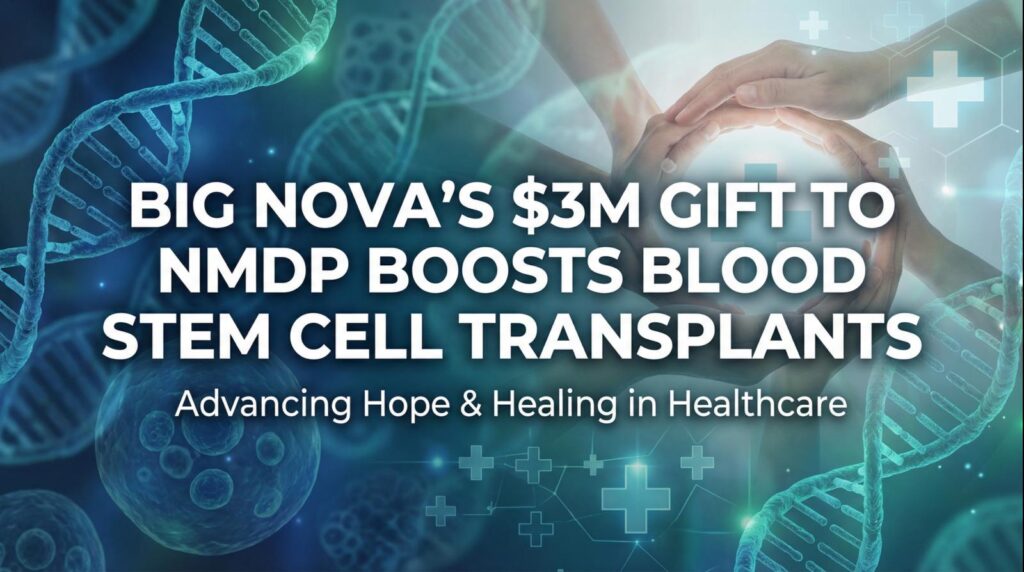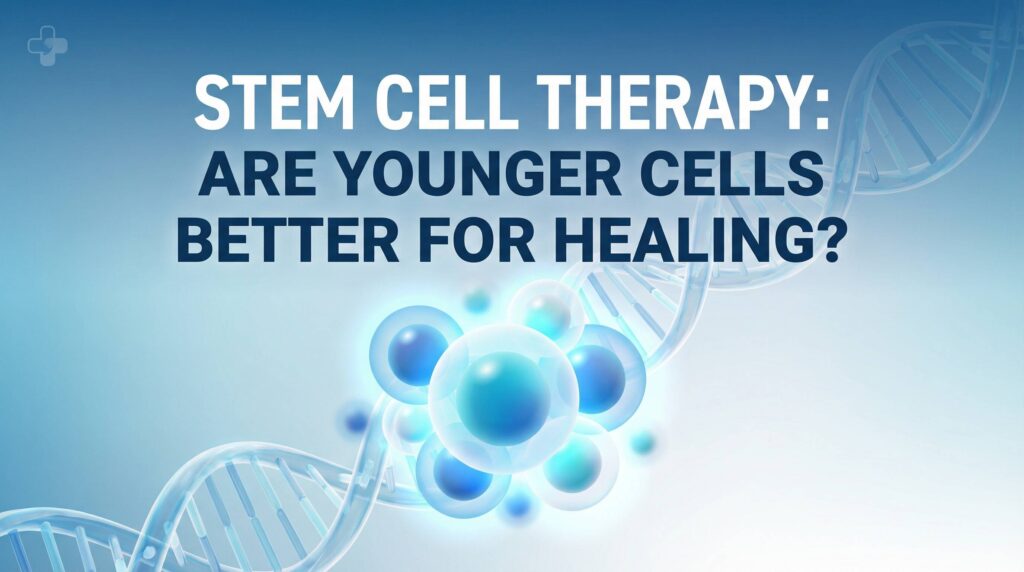In the realm of medical science, few topics have sparked as much hope and controversy as stem cell therapy. These remarkable cells, with their unique ability to transform into various cell types, are a cornerstone of regenerative medicine. Among them, embryonic stem cells (ESCs) stand out due to their exceptional pluripotency. This article delves into the promising yet complex world of using embryonic stem cells for treating neurodegenerative diseases, an area where hope and challenge intertwine.
Understanding Embryonic Stem Cells
Embryonic stem cells are derived from the inner cell mass of blastocysts, early-stage embryos. These cells are unique because they can develop into any cell type in the human body, a property known as pluripotency. This makes ESCs a powerful tool in regenerative medicine. Unlike mesenchymal stem cells or hematopoietic stem cells, which have more limited differentiation capabilities, ESCs can potentially regenerate any damaged tissue or organ, making them a versatile cell source for therapy.
Table 1: Comparison of Different Stem Cell Types
| Stem Cell Type | Source | Differentiation Potential | Key Applications |
|---|---|---|---|
| Embryonic Stem Cells (ESCs) | Inner cell mass of blastocysts | Pluripotent (all cell types) | Regenerative medicine, disease modeling |
| Mesenchymal Stem Cells (MSCs) | Bone marrow, adipose tissue | Limited to mesodermal lineage | Bone and cartilage repair |
| Hematopoietic Stem Cells (HSCs) | Bone marrow, peripheral blood | Blood cells | Blood diseases, bone marrow transplantation |
| Neural Stem Cells (NSCs) | Adult brain | Neurons, astrocytes, oligodendrocytes | Brain and spinal cord injuries |
Neurodegenerative Diseases: A Growing Global Challenge
Neurodegenerative diseases, such as Alzheimer’s, Parkinson’s, and amyotrophic lateral sclerosis (ALS), are characterized by the progressive loss of structure or function of neurons, leading to debilitating symptoms and often premature death. These conditions pose a significant challenge to healthcare systems worldwide due to their complexity, lack of curative treatments, and increasing prevalence in aging populations.
The idea of using embryonic stem cells to treat neurodegenerative diseases is based on their ability to replace lost or damaged neurons. However, this is not just about replenishing lost cells; it’s about understanding and correcting the underlying disease processes, akin to fixing a complex, malfunctioning machine at both the hardware (cells) and software (cellular signaling) levels.
Table 2: Common Neurodegenerative Diseases and Their Impact
| Disease | Description | Global Impact |
|---|---|---|
| Alzheimer’s Disease | Progressive memory loss and cognitive decline | Leading cause of dementia worldwide |
| Parkinson’s Disease | Movement disorders, tremors, and rigidity | Second most common neurodegenerative disorder |
| Amyotrophic Lateral Sclerosis (ALS) | Loss of motor neurons leading to muscle weakness and paralysis | Rare but devastating impact on motor function |
In the following sections, we’ll explore the potential of embryonic stem cell research in combating these complex diseases, the ethical considerations that come with it, and the future direction of this exciting field. Stay tuned as we navigate through the fascinating and intricate world of stem cells and their role in treating some of the most challenging diseases known to humanity.
The Promise of ESCs in Neurodegenerative Disease Research
Harnessing the Power of Pluripotency
The concept of pluripotent stem cells revolutionized medicine. Imagine a “master key” cell that can unlock the door to any cell type in the body – that’s the power of a pluripotent stem cell. Embryonic stem cells embody this potential, offering hope in regenerative medicine, particularly for neurodegenerative diseases where cell loss is a hallmark.
Pioneering Breakthroughs in Stem Cell Research
The journey of stem cell research has been marked by groundbreaking discoveries. From the initial isolation of human embryonic stem cells to advanced techniques in stem cell differentiation, each step has brought us closer to understanding how to harness these cells for therapeutic purposes.
Table 3: Milestones in Stem Cell Research
| Year | Milestone | Impact |
|---|---|---|
| 1998 | First isolation of human embryonic stem cells | Opened new avenues in regenerative medicine |
| 2006 | Discovery of induced pluripotent stem cells (iPSCs) | Enabled patient-specific therapies |
| 2010s | Advancements in targeted differentiation | Paved the way for creating specific cell types for therapy |
Current Landscape in Neurodegenerative Disease Research
In the context of neurodegenerative diseases, researchers are exploring how ESCs can be used to understand disease mechanisms and develop new treatments. For instance, in Parkinson’s Disease, ESCs could potentially be differentiated into dopaminergic neurons, replacing those lost to the disease.
Table 4: Research Advances Using ESCs in Neurodegenerative Diseases
| Disease | Research Focus | Potential Impact |
|---|---|---|
| Alzheimer’s Disease | ESC-derived neural cells to study disease mechanisms | Improved understanding of disease pathology |
| Parkinson’s Disease | Differentiation of ESCs into dopaminergic neurons | Potential for cell replacement therapies |
| ALS | ESCs to model motor neuron degeneration | Insights into disease progression and drug testing |
The Potential of Stem Cells in Regenerative Medicine
The true potential of stem cell therapy in neurodegenerative diseases lies in its ability to do more than just replace lost cells. It offers a way to study disease progression in a lab setting, test new drugs, and, ultimately, provide a source of healthy cells to be transplanted into patients. It’s akin to not only repairing a damaged building but also understanding why it fell apart and preventing future collapses.
In this era of personalized medicine, the possibilities of stem cell therapies are expanding. The next section will delve into the ethical and regulatory aspects that are crucial to understanding the full scope of this field. As we continue, it’s essential to remember that while the promise of embryonic stem cell therapy is immense, navigating this path requires careful consideration of both scientific possibilities and ethical responsibilities.
Ethical and Regulatory Considerations
Navigating the Ethical Landscape
The field of embryonic stem cell research treads a delicate line between groundbreaking scientific advancement and profound ethical questions. These stem cells, derived from early human embryos, hold unparalleled potential in treating diseases, yet their use raises significant ethical concerns. The crux of the debate centers around the moral status of the embryo and the balance between potential health benefits and ethical considerations.
Public Opinion and Controversies
Public opinion on embryonic stem cell research is as diverse as the ethical arguments surrounding it. Some advocate for the unrestricted pursuit of scientific knowledge and the potential health benefits, while others are concerned about the moral implications of using human embryos in research. This dichotomy reflects a broader conversation about the value of life, scientific progress, and the boundaries of medical research.
The Regulatory Framework
Regulations governing stem cell research vary significantly across the world, reflecting differing cultural, ethical, and religious perspectives. These regulations play a crucial role in shaping the direction and scope of research in this field.
Table 5: Global Regulatory Landscape for Stem Cell Research
| Region | Regulatory Stance | Impact on Research |
|---|---|---|
| USA | Varied state-level policies, federal funding restrictions on certain types of ESC research | Mixed impact on research and funding |
| EU | Generally supportive but with ethical guidelines and restrictions | Encourages research within ethical boundaries |
| Asia | Diverse policies, some countries with less restrictive environments | Emerging hubs for stem cell research |
Balancing Scientific Advancement and Ethical Concerns
The challenge in embryonic stem cell research lies in finding a balance between the immense potential for treating debilitating diseases and respecting ethical boundaries. This balance is not static but evolves with societal values, scientific advancements, and philosophical debates.
It’s essential to engage in ongoing dialogue among scientists, ethicists, policymakers, and the public to navigate these complex issues. As we progress in our understanding and capabilities, this dialogue will shape the future of stem cell research, ensuring that it advances in a manner that respects both scientific potential and ethical integrity.
In the next section, we will explore the technical challenges and limitations that researchers face in this field, which, along with ethical considerations, define the trajectory of stem cell therapy for neurodegenerative diseases.
Challenges and Limitations in ESC Research
Technical Hurdles in Stem Cell Research
While the potential of embryonic stem cells in treating neurodegenerative diseases is immense, the path is strewn with significant technical challenges. These range from the complexities of cell cultivation to the intricacies of ensuring that stem cells differentiate into the desired cell type without unwanted side effects.
Difficulties in Cultivation and Differentiation
The cultivation of ESCs and their controlled differentiation into specific cell types, such as neural cells, is a sophisticated process. It’s akin to orchestrating a symphony where each instrument (gene) must play its part at the right time to create a harmonious outcome (a specific cell type). The slightest misstep can lead to disharmony, or in this case, unwanted cell types or uncontrolled growth.
Table 6: Technical Challenges in ESC Research
| Challenge | Description | Impact on Research |
|---|---|---|
| Cultivation | Maintaining pluripotency and preventing spontaneous differentiation | Requires precise culture conditions |
| Differentiation | Directing ESCs to become specific cell types | Complex understanding of developmental biology needed |
| Scale-up | Producing cells in quantities needed for therapy | Industrial-scale bioprocessing challenges |
Immune Rejection and Safety Concerns
Another significant hurdle is immune rejection. When cells from one individual (the donor) are introduced into another (the recipient), the recipient’s immune system may see these cells as foreign and attack them. Overcoming this barrier is like trying to introduce a stranger into a tight-knit community and getting everyone to accept them as one of their own.
Table 7: Risks and Safety Concerns in ESC Therapy
| Risk | Description | Impact on Therapy |
|---|---|---|
| Immune Rejection | The recipient’s immune system attacks the transplanted cells | Requires immunosuppression or matching donor-recipient tissues |
| Tumor Formation | ESCs may form tumors if not properly differentiated | Strict quality control and safety testing needed |
From Lab to Clinic: The Journey of Cell Therapies
Translating stem cell research from the laboratory bench to the bedside presents its own set of challenges. This involves not only overcoming technical and biological hurdles but also navigating regulatory pathways and demonstrating safety and efficacy through clinical trials. It’s a journey from concept to cure, fraught with obstacles at every turn but driven by the potential to change lives.
In the next section, we’ll explore the emerging trends and future directions in embryonic stem cell research, including innovative technologies and approaches that are pushing the boundaries of what’s possible in treating neurodegenerative diseases. Stay tuned as we delve into the exciting prospects that lie ahead in this dynamic field of medicine.
Emerging Trends and Future Directions
Innovations in Embryonic Stem Cell Research
The field of embryonic stem cell (ESC) research is constantly evolving, with new technologies and approaches reshaping our understanding and capabilities. These innovations are not just about doing things differently; they’re about seeing and navigating the world of stem cells in entirely new ways.
Cutting-Edge Techniques and Integration with Other Fields
Recent advancements like CRISPR gene editing and 3D bioprinting are revolutionizing how we approach stem cell research. CRISPR, for example, allows for precise modifications in the stem cell genome, akin to a molecular scalpel that can add, remove, or alter genetic sequences with unprecedented accuracy. 3D bioprinting, on the other hand, offers the possibility of creating structured tissue models, which could be used for drug testing or even organ transplantation in the future.
Table 8: Innovative Technologies in ESC Research
| Technology | Description | Potential Impact |
|---|---|---|
| CRISPR Gene Editing | Precise genetic modification in stem cells | Tailored therapies, disease modeling |
| 3D Bioprinting | Layer-by-layer fabrication of tissue structures | Tissue engineering, complex disease models |
The Horizon of ESC Research in Neurodegenerative Diseases
Looking forward, the potential applications of embryonic stem cells in treating neurodegenerative diseases are vast and varied. The goal is not just to replace lost neurons but also to understand the disease mechanisms at a cellular level and develop targeted therapies. It’s like piecing together a puzzle, where each piece represents a different aspect of the disease, and ESCs provide the missing pieces.
Potential for Personalized Medicine
One of the most exciting prospects of ESC research is its application in personalized medicine. By using patient-derived induced pluripotent stem cells (iPSCs), therapies can be tailored to the individual’s genetic makeup, reducing the risk of immune rejection and increasing the efficacy of treatment. This approach transforms the one-size-fits-all model of medicine into a tailored suit, fitting each patient perfectly.
Table 9: Personalized Medicine and ESCs
| Aspect | Description | Benefit |
|---|---|---|
| Patient-Specific Cells | Using iPSCs derived from the patient | Reduced risk of immune rejection |
| Tailored Therapies | Customized treatments based on individual genetic profiles | Increased efficacy, lower side effects |
FAQ
Q: What are pluripotent stem cells?
A: Pluripotent stem cells are a type of stem cell that has the potential to develop into many different cell types in the body. They can be derived from embryonic stem cells or induced pluripotent stem cells.
Q: What is the potential of stem cell therapy in neurodegenerative diseases?
A: Stem cell therapy has the potential to provide new neurons, replace damaged cells, and enhance the brain’s intrinsic regenerative capacity, offering hope for treating neurodegenerative diseases such as amyotrophic lateral sclerosis (ALS) and Parkinson’s disease.
Q: What are mesenchymal stem cells and how are they relevant to neurodegenerative diseases?
A: Mesenchymal stem cells are adult stem cells found in various tissues and have the ability to differentiate into a variety of cell types, including neural cells. Their potential for immunomodulation and tissue repair makes them attractive for therapeutic use in neurodegenerative diseases.
Q: What is the role of neural stem cells in the context of neurodegenerative diseases?
A: Neural stem cells are self-renewing, multipotent cells that can give rise to the different types of cells in the nervous system. They hold promise for the treatment of neurodegenerative diseases through their potential to replace damaged neurons and promote neural repair.
Q: How is stem cell transplantation used in the treatment of neurodegenerative diseases?
A: Stem cell transplantation involves the transfer of stem cells to a recipient with the aim of replacing damaged or dysfunctional cells in their body. In the context of neurodegenerative diseases, this approach holds potential for regenerating diseased neural tissue.
Q: What are induced pluripotent stem cells and their relevance to neurodegenerative diseases?
A: Induced pluripotent stem cells are adult cells that have been reprogrammed to exhibit characteristics similar to embryonic stem cells. Their ability to differentiate into neural cells makes them a valuable tool for studying and potentially treating neurodegenerative diseases.
Q: What is the significance of stem cell-derived neuronal cells in neurodegenerative disease research?
A: Stem cell-derived neuronal cells can serve as a valuable model for studying the underlying mechanisms of neurodegenerative diseases and for testing potential therapeutic interventions, such as drug screening and disease modeling.
Q: What types of stem cells are commonly explored for therapeutic purposes in neurodegenerative diseases?
A: Various types of stem cells, including mesenchymal stem cells, neural stem cells, and induced pluripotent stem cells, are being studied and considered for their therapeutic potential in addressing neurodegenerative diseases.
Q: What are the sources of stem cells used in research and potential therapies for neurodegenerative diseases?
A: The sources of stem cells for research and potential therapies in neurodegenerative diseases include human embryonic stem cells, induced pluripotent stem cells, mesenchymal stem cells derived from bone marrow, and neural stem cells derived from fetal or adult tissues.
Q: What is the current status of stem cell-based therapies for neurodegenerative diseases?
A: Stem cell-based therapies for neurodegenerative diseases are an active area of research and clinical investigation, with ongoing efforts to understand their safety, efficacy, and potential for addressing conditions such as ALS, Parkinson’s disease, and Alzheimer’s disease.
Conclusion: A Path Forward in ESC Research
As we look to the future, the journey of embryonic stem cell research in treating neurodegenerative diseases is one filled with both challenges and opportunities. From the ethical considerations to the technical hurdles, and the exciting innovations on the horizon, this field represents a convergence of science, ethics, and hope.
While there is still much to learn and many obstacles to overcome, the potential of ESCs in transforming the lives of those suffering from neurodegenerative diseases is undeniable. As we continue to explore and understand these remarkable cells, we open doors to new therapies, improved quality of life, and ultimately, answers to some of the most challenging medical questions of our time.
References and Further Reading
For up-to-date information on embryonic stem cell research, particularly in the context of neurodegenerative diseases, the following websites and organizations are highly recommended:
- National Institutes of Health (NIH) Stem Cell Information: This website provides comprehensive information on stem cell research, including embryonic stem cells, maintained by the U.S. Department of Health & Human Services. It’s a valuable resource for the latest in stem cell research, policies, and ethical guidelines.
- Harvard Stem Cell Institute (HSCI): Harvard has been at the forefront of stem cell research since 2004, breaking down barriers to collaboration in this field. Their website offers insights into the latest research and developments in stem cell science, making it a great resource for those interested in the cutting-edge of stem cell applications and discoveries.
- Stanford Institute for Stem Cell Biology and Regenerative Medicine: Part of Stanford University School of Medicine, this institute is a leader in stem cell research. Their website provides information on the latest advancements in stem cell biology and regenerative medicine, including work on embryonic stem cells and their application in treating various diseases.
These websites offer a wealth of information that is both credible and accessible to individuals interested in the latest developments in stem cell research and its potential applications in treating neurodegenerative diseases.



